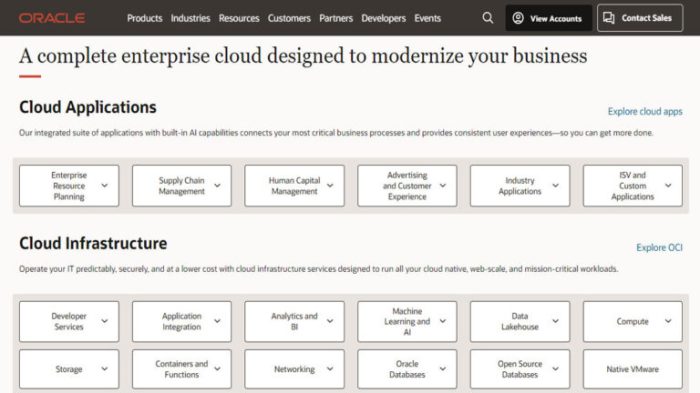In today’s dynamic business environment, efficient project management and robust customer relationship management (CRM) are crucial for success. Choosing the right software to streamline these processes can significantly impact productivity, profitability, and customer satisfaction. This comprehensive guide explores the best project management and CRM software options available, helping you make an informed decision based on your specific needs.
Understanding Your Needs: Project Management vs. CRM
Before diving into specific software solutions, it’s essential to understand the core differences between project management and CRM software. While they can often integrate, they serve distinct purposes:
Project Management Software:, Best project management and crm software
- Focus: Planning, executing, monitoring, and closing projects.
- Key Features: Task management, Gantt charts, resource allocation, time tracking, collaboration tools, reporting and analytics (e.g., burn-down charts, progress reports).
- Benefits: Improved team collaboration, enhanced project visibility, better resource utilization, on-time and within-budget project delivery.
- Examples: Asana, Trello, Monday.com, Jira, Microsoft Project.
CRM Software:
- Focus: Managing customer interactions and data throughout the customer lifecycle.
- Key Features: Contact management, lead generation and nurturing, sales pipeline management, customer support ticketing, marketing automation, reporting and analytics (e.g., sales conversion rates, customer churn).
- Benefits: Improved customer relationships, increased sales conversions, better customer retention, enhanced marketing effectiveness.
- Examples: Salesforce, HubSpot, Zoho CRM, Pipedrive, Freshsales.
Top Project Management Software Options: A Detailed Look
Choosing the right project management software depends on your team size, project complexity, and budget. Here’s a closer look at some leading options:
Asana:
- Strengths: User-friendly interface, robust task management features, excellent collaboration tools, suitable for teams of all sizes.
- Weaknesses: Can become complex for very large projects, limited reporting capabilities compared to some competitors.
Trello:
- Strengths: Simple and intuitive Kanban board interface, excellent for visualizing workflow, great for smaller teams and simpler projects.
- Weaknesses: Limited reporting and analytics, may not be suitable for complex projects with many dependencies.
Monday.com:
- Strengths: Highly customizable, visually appealing interface, strong collaboration features, integrates well with other tools.
- Weaknesses: Can be expensive for larger teams, steep learning curve for some users.
Jira:
- Strengths: Powerful features for agile development teams, excellent issue tracking and bug management, extensive reporting capabilities.
- Weaknesses: Steeper learning curve, can be overwhelming for non-technical users, more expensive than some alternatives.
Microsoft Project:
- Strengths: Comprehensive project management features, robust scheduling capabilities, integrates well with other Microsoft Office applications.
- Weaknesses: Can be complex and expensive, may not be the best choice for smaller teams or simpler projects.
Top CRM Software Options: A Detailed Comparison
Selecting the right CRM software depends on your sales process, customer base, and budget. Here are some leading options:

Source: ziligma.com
Salesforce:
- Strengths: Highly customizable, extensive features, integrates well with other applications, suitable for large enterprises.
- Weaknesses: Expensive, complex to implement and customize, steep learning curve.
HubSpot:
- Strengths: Comprehensive suite of marketing, sales, and service tools, user-friendly interface, strong inbound marketing capabilities.
- Weaknesses: Can be expensive for larger businesses, some features may be overkill for smaller companies.
Zoho CRM:
- Strengths: Affordable, comprehensive features, good value for money, integrates well with other Zoho applications.
- Weaknesses: Can feel less polished than some competitors, customer support can be inconsistent.
Pipedrive:
- Strengths: Simple and intuitive interface, excellent for sales pipeline management, affordable pricing plans.
- Weaknesses: Limited customization options, may not be suitable for businesses with complex sales processes.
Freshsales:
- Strengths: User-friendly interface, good value for money, strong phone and email integration.
- Weaknesses: Fewer advanced features compared to some competitors, limited reporting capabilities.
Integrating Project Management and CRM Software: Best Project Management And Crm Software
Integrating your project management and CRM systems can provide a significant boost in efficiency. This allows for seamless data flow between project tasks and customer interactions. For example, you can track project progress related to specific customer accounts, ensuring timely delivery and improved customer satisfaction. Many software providers offer native integrations or APIs to facilitate this connection.
Choosing the Right Software: Key Considerations
- Team Size and Structure: Consider the number of users and how your team is organized.
- Project Complexity: Evaluate the complexity of your projects and the level of detail required for tracking.
- Budget: Software pricing models vary widely; choose a solution that aligns with your budget.
- Integrations: Consider the need for integration with other tools you already use.
- Scalability: Ensure the software can scale with your business growth.
- User-Friendliness: Choose software with an intuitive interface that is easy for your team to learn and use.
Frequently Asked Questions (FAQ)
- Q: What is the difference between project management and CRM software? A: Project management software focuses on planning, executing, and monitoring projects, while CRM software focuses on managing customer interactions and data.
- Q: Can I use both project management and CRM software? A: Yes, many businesses use both types of software to manage projects and customer relationships effectively. Integration between the two is often beneficial.
- Q: How much does project management/CRM software cost? A: Pricing varies widely depending on the features, number of users, and vendor. Some offer free plans, while others have subscription models with different tiers.
- Q: Which software is best for small businesses? A: For small businesses, simpler, more affordable options like Trello (project management) or Pipedrive (CRM) might be suitable. However, the best choice depends on specific needs.
- Q: How do I choose the right software for my business? A: Consider your team size, project complexity, budget, required integrations, and scalability needs. Try free trials or demos before committing to a purchase.
References
Call to Action
Ready to streamline your project management and CRM processes? Explore the software options discussed above and choose the solution that best fits your business needs. Many offer free trials, allowing you to test the software before committing to a purchase. Start improving your efficiency and customer relationships today!
Essential FAQs
What are the key features to look for in project management and CRM software integration?
Key features include seamless data synchronization, real-time reporting and analytics, customizable workflows, robust security, and scalable architecture to accommodate future growth.
How can I choose the best software for my business needs?
Consider factors such as business size, industry, budget, specific requirements, and the level of integration needed between project management and CRM functionalities. Evaluate different software options through free trials or demos.
What are the potential challenges of integrating project management and CRM software?
Potential challenges include data migration complexities, integration complexities, user adoption issues, and the need for ongoing training and support.
What is the return on investment (ROI) for integrated project management and CRM software?

Source: ziligma.com
ROI varies depending on factors such as business size, implementation efficiency, and user adoption. However, potential benefits include increased productivity, improved customer satisfaction, reduced operational costs, and enhanced revenue generation.
